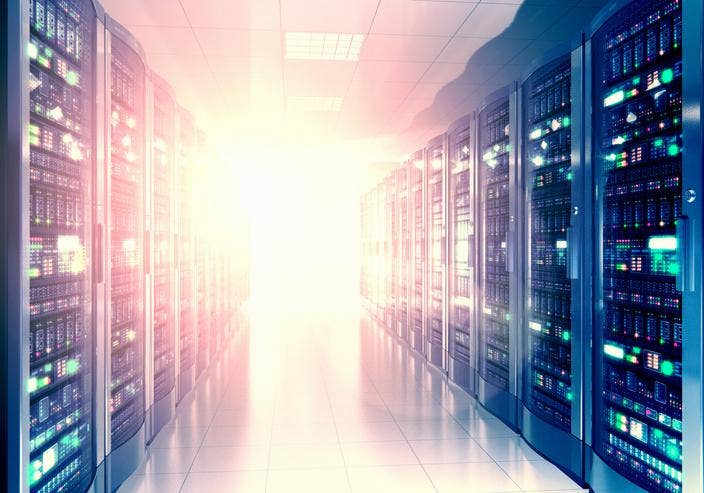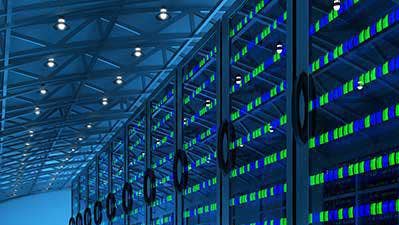Data Center Spending To Decline In 2019: 5 Reasons Behind The Fall
Leading Gartner researcher John-David Lovelock talks about the major reasons and trends behind the projected 2.8 percent decline in data center spending in 2019.

What’s Behind The Data Center Spending Fall?
Worldwide spending on data center systems will decline 2.8 percent in 2019 to $204 billion year over year, according to new research from Gartner. There are many factors in the broad data center market that is causing the spending to drop that channel partners and vendors alike need to take into account, says John-David Lovelock, research vice president at Gartner who helped build the research firms’ 2019 Global IT Spending Forecast report.
“The overriding thing we have to really hone in on is the split now between the spending by enterprises – so your typical banks, retailers and governments, etc. -- buying compute and servers, and the amount being spent by the service providers who go either into the enterprise space like Google, Amazon, Microsoft or the consumer space like Facebook,” said Lovelock in an interview with CRN.
Gartner is now projecting that worldwide IT spending will total $3.79 trillion in 2019, up 1.1 percent year over year. The data center systems segment will experience the largest spending decline this year, according to Gartner. Lovelock breaks down the five biggest reasons and trends shaping data center spending in 2019.

Don’t Forget The Huge Surge In 2018
Although 2019 will see a decline in data center spending, 2018 was a massive year for data centers. In 2018, data center spending grew a whopping 15.5 percent to $210 billion year over year, which was by far the largest growth area in the IT industry. Data center year-over-year spending growth in 2018 exceeded the 9.3 percent growth in enterprise software, 5.5. percent growth in IT services, 2.1 percent growth communications services and flat devices spending, according to Gartner.
“We’re coming off of a really big bump. A big refresh that happened across everything in 2018, including mainframe computers which helped out IBM. There was a large refresh going on,” said Lovelock, a distinguished analyst with over 41 years of industry experience. “We suspect that some of the buying in Europe is part of that inventory build-up ahead of the uncertainty of Brexit. We expected some of that refresh to continue into this year.”

Lower Server Prices
A major factor in the data center spending decline is lower average selling prices for servers in 2019. The lower expected average server price is being driven by adjustments in the pattern of expected component costs, said Lovelock. Cloud-based alternatives to data center equipment is driving growth in enterprise software spending, which is expected to increase 7.1 percent in 2019 year over year to $427 billion. However, data center providers are shifting their sales motion to provider new data center consumption-based offerings such as Hewlett Packard Enterprises GreenLake and Lenovo TruScale Infrastructure Services.
“Consumption-based [offerings] competes against one big advantage that the cloud has, which is paying for consumption rather than paying upfront,” said Lovelock. “This is a financing play to smooth out the cost of a server, to take one of the advantages that the cloud has and level that playing field. We saw the same thing happen when cloud came into software in that license vendors went to a subscription-based instead of license upfront and maintenance going forward.”

Server Spending Being Led By Hyper-Scale Service Providers In North America
Led by large-scale data center operators Amazon, Apple, Google, Facebook and Microsoft, 2018 broke the record for the most capex spent on data centers in a single year with an astounding $120 billion. Depending on the geography, these hyperscale service providers are making up a sizable portion of the total data center spending in 2019.
In North America, Lovelock said around 30 percent of the spending on servers this year will be made by enterprises, businesses, non-profits and governments. The remaining 70 percent of the overall spending will come from external service providers.
“So $11 billion will be spent by enterprises, $19 billion by service providers [in North America],” said Lovelock. “That numbers shift as we move across the world depending how cloud-centric the [region] is.”
He said enterprises will account for 45 percent of all data center spending in western Europe, 72 percent in Latin America and more than 90 percent in Greater China. “It’s all about the cloud and how big of an effect that it has had,” Lovelock said.

‘Multiple Competitors’ For Spending Share
Enterprises have more options on how to buy and consume data center solutions than ever before. Businesses can select from a variety of different models around how to spend their IT budget including public cloud, hybrid cloud, on-premise data center, on-premise edge, servers or serverless technology.
“Now enterprises have the opportunity of, ‘Do I buy another tower? Or do I invest in cloud infrastructure of some sort? Do I go to Amazon, Google, Microsoft for cloud compute capabilities? Or do I bypass that entirely and go to Salesforce or Workday or SAP or Oracle, take their cloud applications and not buy servers anymore? The server market now has multiple competitors where they use to only compete in the channel,” said Lovelock.

Spending To Bounce Back In 2020
The decline in worldwide spending on data center systems in 2019 is not expected to continue in 2020. Data center spending is projected to increase to $207 billion in 2020, an increase of 1.7 percent compared to 2019.
“Cloud isn’t always the answer. On-premise won’t always be the answer. Edge is going to be part of the answer,” said Lovelock. “Edge is the new signal in there that’s changing the balance. Modular data centers will certainly be part of that new equilibrium as well. Colocation isn’t going away, in fact, it’s growing.”
Overall, global IT spending is expected to grow from $3.79 trillion in 2019 to $3.93 trillion by 2020, representing a 3.6 percent increase.